Crypto is a jungle 🌴
Real talk: navigating DeFi today is like an expedition into the jungle, not a leisurely stroll. We're talking about survival here. With all the fake projects that drop scam cryptos and memecoins that scam 24/7, doing your own research (DYOR) is really crucial.
According to a Chainplay report, 97% of 2024 memecoins are already dead, with an average of 2,020 memecoins dying each month. That same report says that more than half of memecoins (55.24%) show signs of malicious intent, like rug pulls or Ponzi schemes.
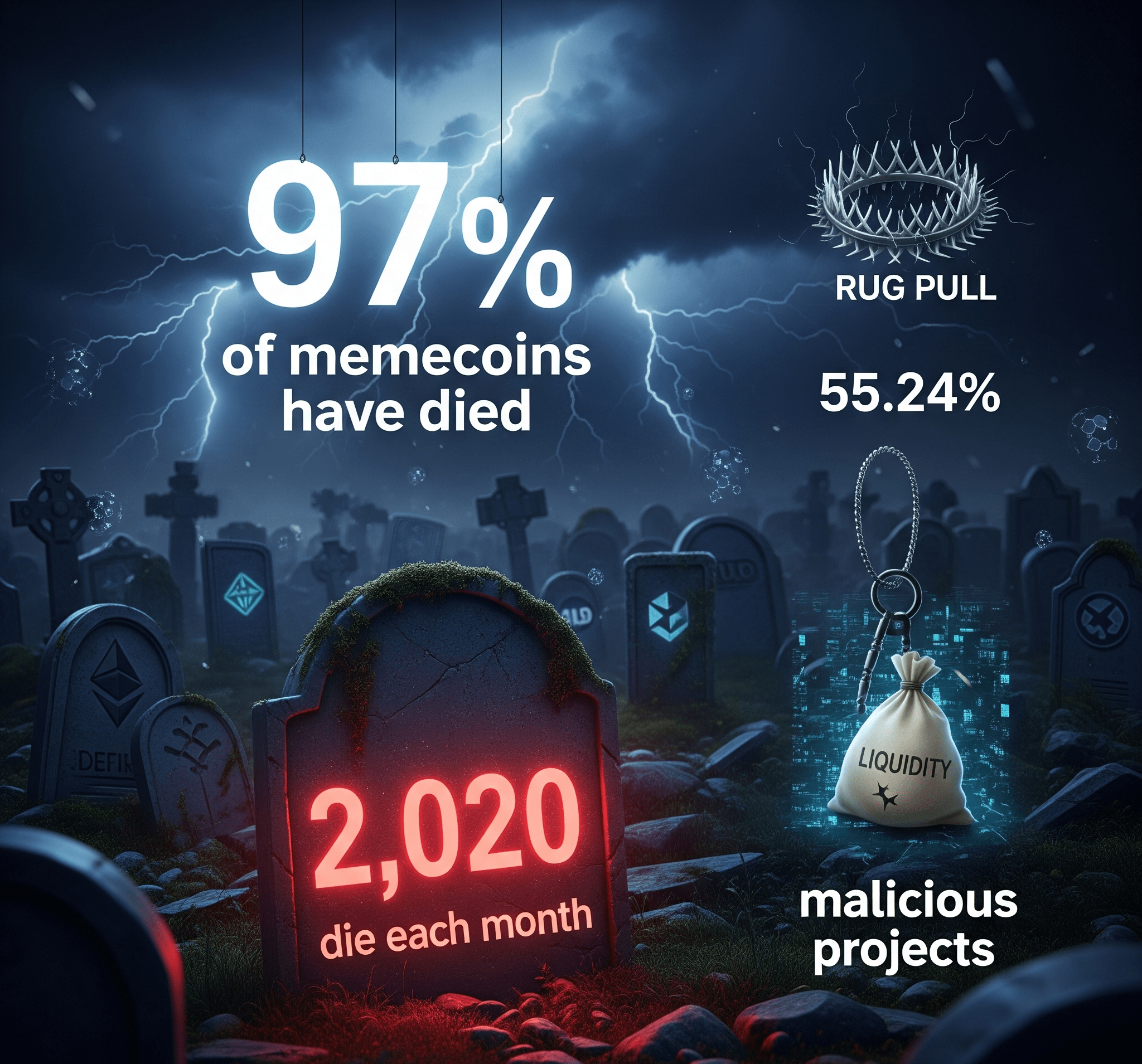
Given the number of scams, understanding what's happening, how it happened, who's doing what and when (the Investigation, that is) is a matter of survival in this game.
Total chaos 📊
Even though blockchain data is transparent and open source, what we see on block explorers is raw data: alphanumeric addresses, millions of transactions, Solidity code details, even binary. It's impossible to get an overall view of what's going on, to spot the suspicious things, or to clearly summarize what's happening on a crypto. So analysis becomes super complicated and inefficient for crypto investigations - which often involve masses of blockchain data.

That's where Bubblemaps comes in and transforms this mess into clear and structured visual information. In fact, what's great about Bubblemaps goes much further, and you'll see why.
What is Bubblemaps? 🎯
Basically, #Bubblema ps is a layer of intelligence on everything that happens on the blockchain. It transforms blockchain data into structured visual information, like a graphic map, more specifically a bubble map. You just need to understand the basics of crypto to use Bubblemaps, no need to code to generate a graph, it's easy and intuitive. A Bubblemaps bubble map looks like this:
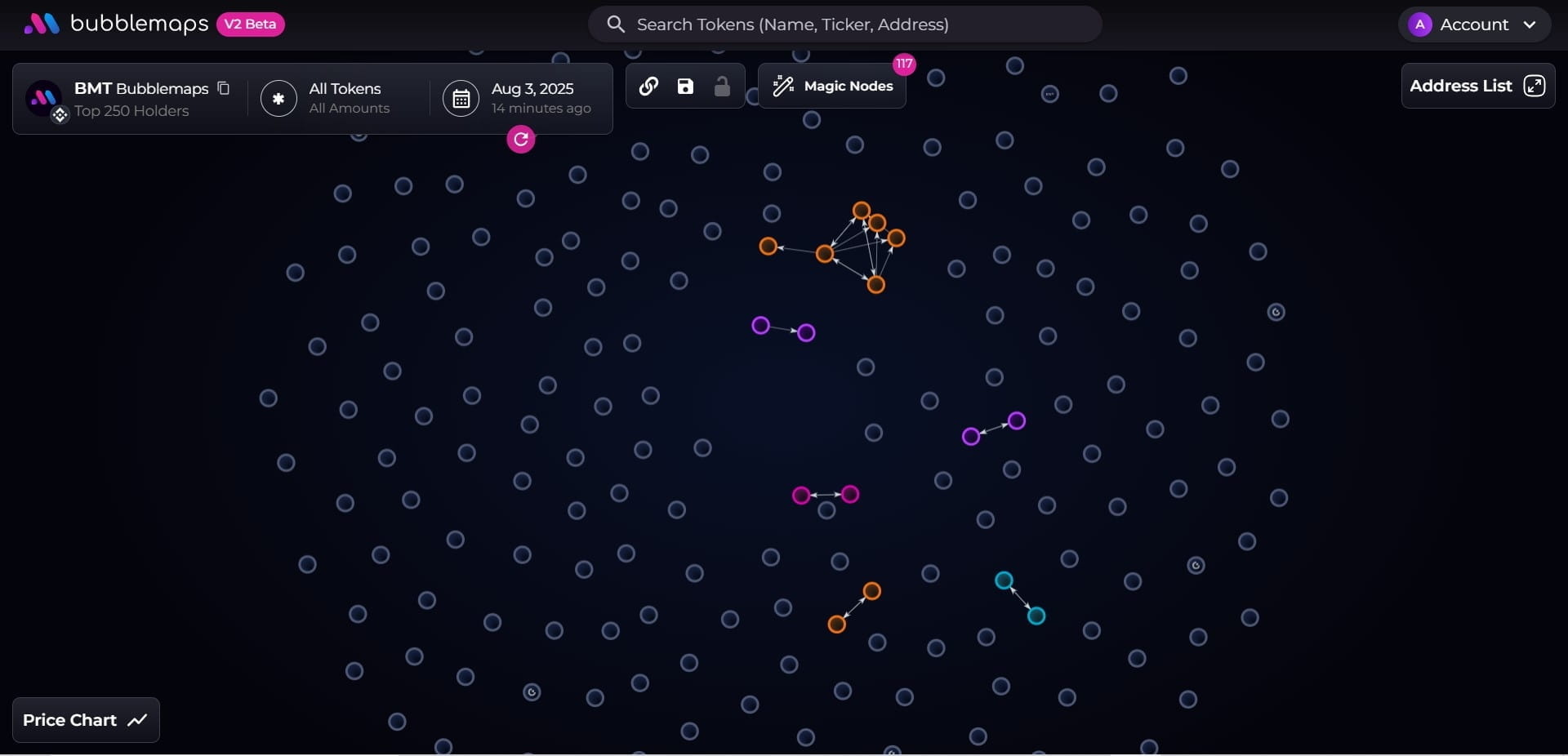
The basics of the game 🎮
You're probably wondering what difference it makes, but before we go any further, here are the basic rules of Bubblemaps when you're investigating a token:
The map shows the 150 top holders of the token by default, like the 150 wallets with the most tokens. But recently, I've seen that it shows the 250 top holders by default.
The size of the bubble = the amount of tokens in the wallet. The more tokens the wallet has, the bigger its bubble.
The links (lines) between wallets = past token transfers between the two wallets, and the arrow shows the direction of the transfer (from whom to whom).
So if there's a transfer history, these wallets (bubbles) are linked together, which reveals everything: wash trading, wallet manipulation, private sales, pre-sales, giveaways, etc.
A cluster = a group/network of wallets linked together. So we can assume it's the same person or the same group behind it, or just that these wallets know each other, like the holders are friends.
A pattern = the geometric configuration of the bubbles, basically the distribution of tokens. It's the overall pattern that the wallets form.
For more details on Bubblemaps, check out this Binance Academy article: link
The investigation begins 🕵️
The easiest way to get started with Bubblemaps is to check for anomalies in the patterns. Your goal is to see if something is wrong. And there's an anomaly only when you compare it to what's normal. Normal is the standard, what we usually see on projects that have worked. For a token, the norm is a pattern that we see on functional tokens of the same category already established. Reference example for a normal memecoin distribution: Babydogecoin:
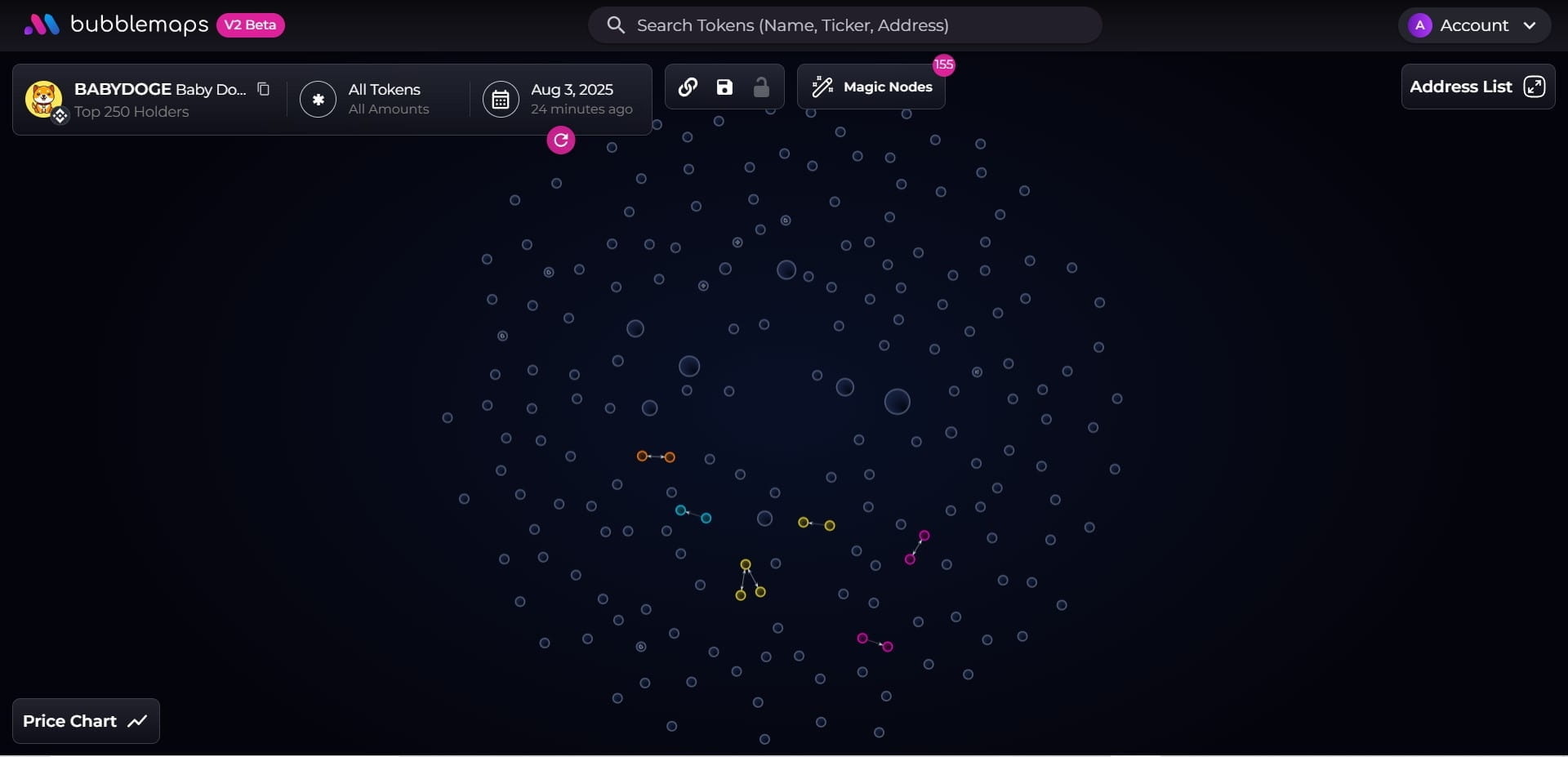
However, a distribution like this should make you tilt:
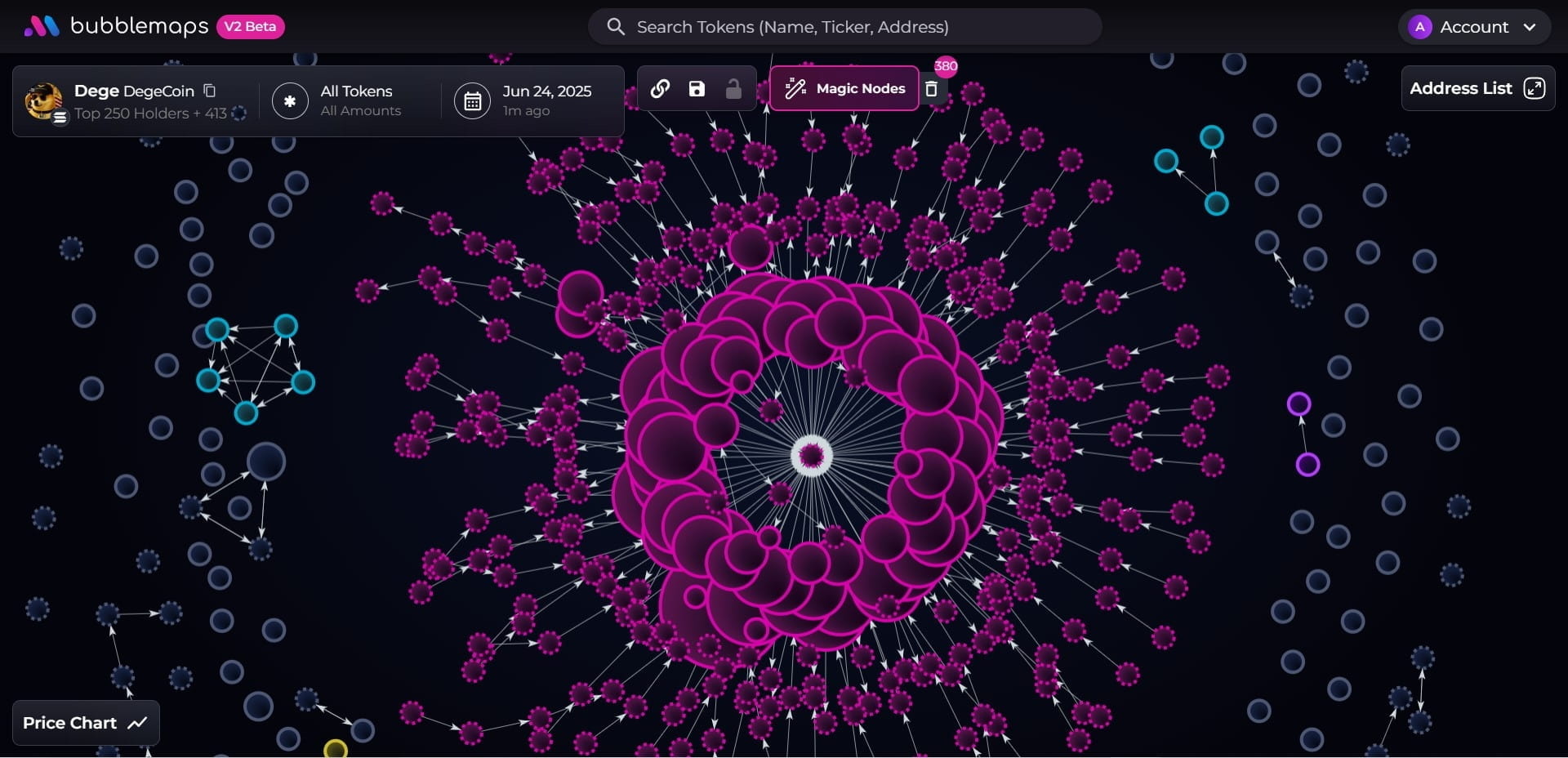
Application on a recent rug pull: $Dege 💀
The bubble map below is $Dege at launch, it looks pretty cool, fairly well distributed except for a small cluster that controls like 0.31% of the supply; not a big deal for a memecoin.
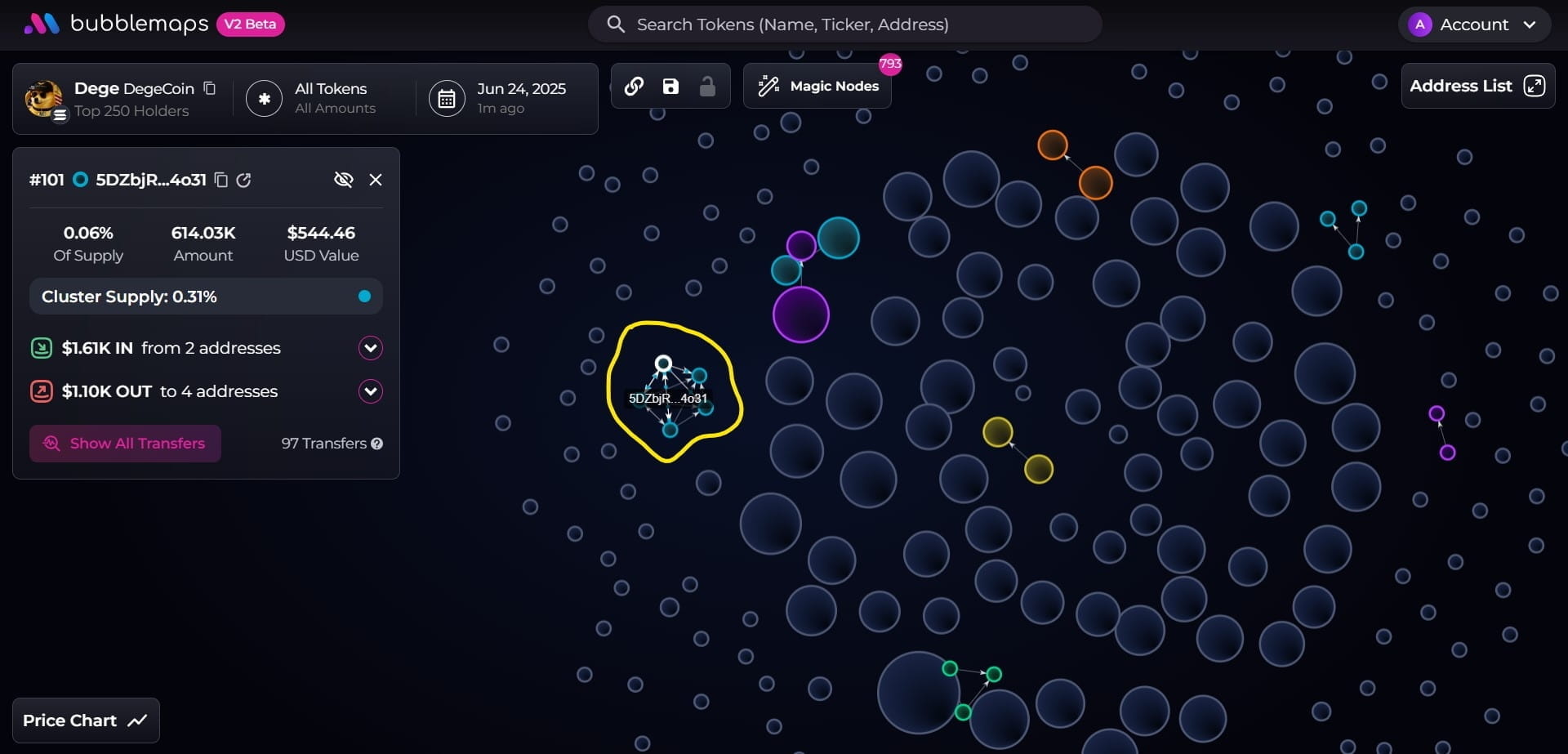
But then I thought: what if it was done on purpose to hide suspicious things? So I dug deeper. I decided to check the transactions of the largest holder, see who he exchanges with, maybe one of them could teach us something. To see the list of top holders, you click on "Address list" in the upper right and when you click on a wallet, a box opens on the left with the details of the wallet, including a button to see its transactions, that's what I did.
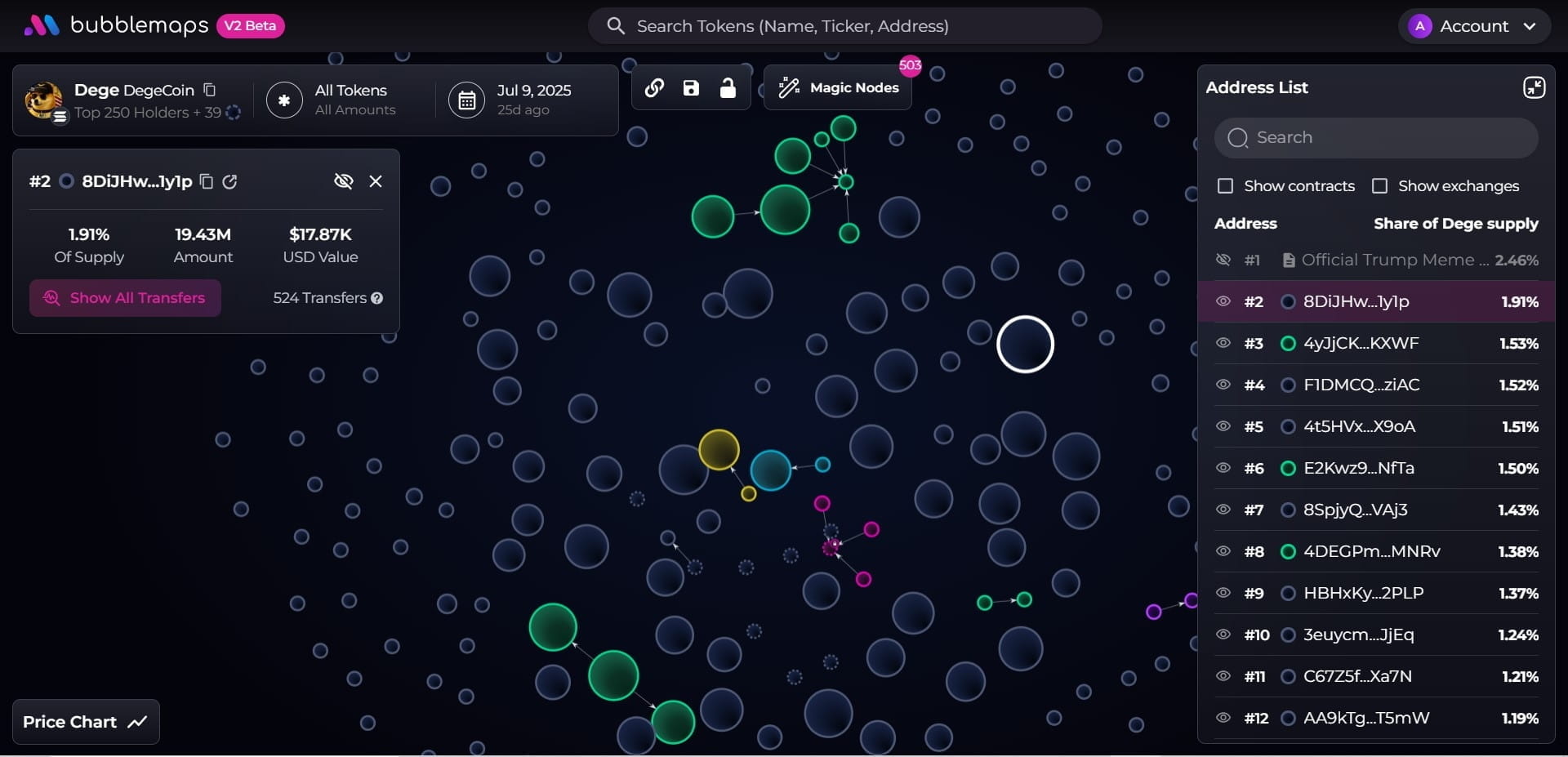
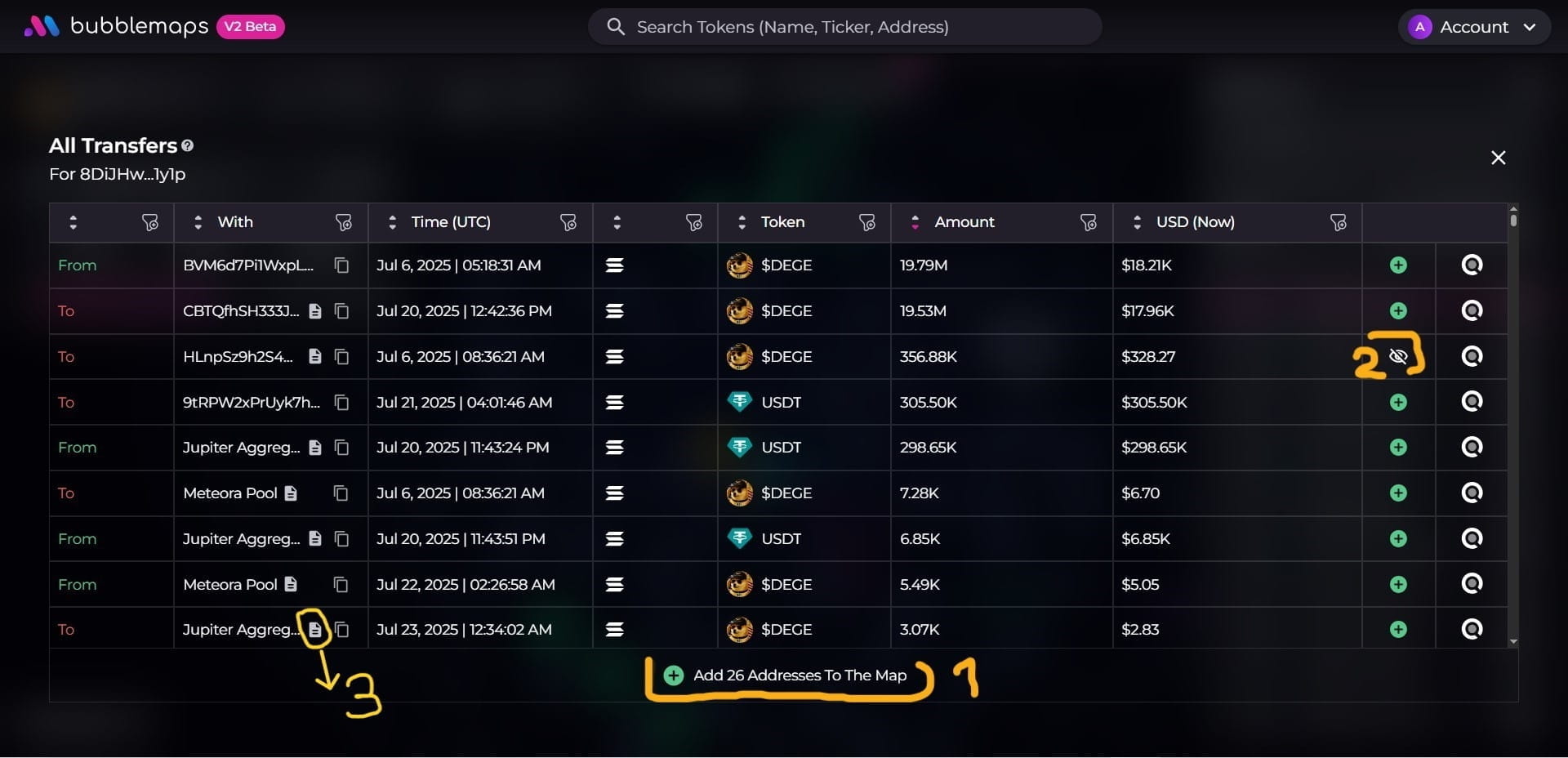
Once on the history, I added all the wallets with which he had links (transfers) by clicking on button 1 of the capture, then I tried to hide the addresses of the smart contracts and those with dust transactions (less than $1 ofSOL or the equivalent in $Dege at the beginning) with icon 2. Smart contracts are the addresses with the document sign 📄 next to them (see icon 3).
After that, I hid the history table by clicking on the cross (X) in the upper left, to review the bubbles, and there, I discover something amazing:
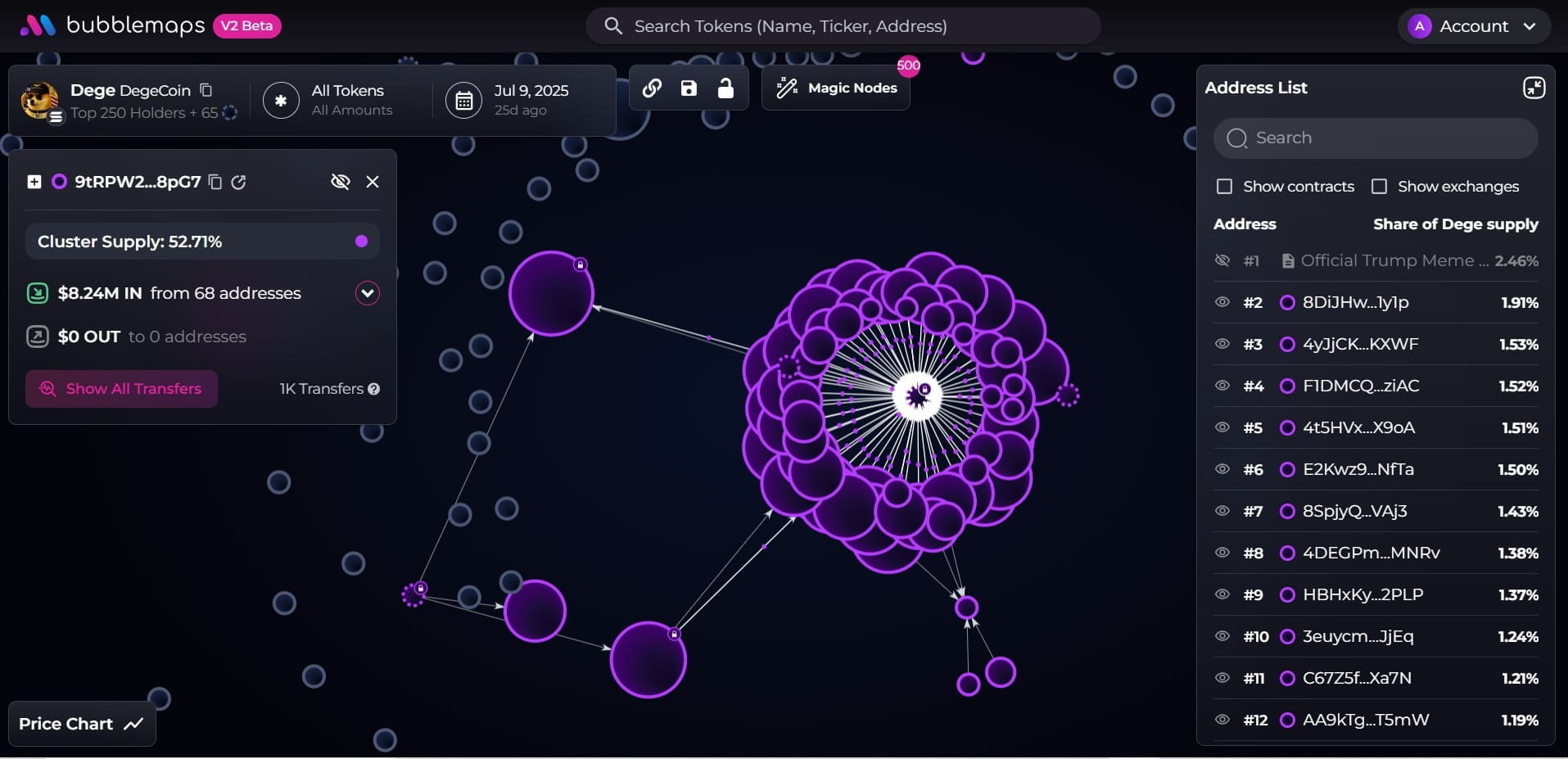
I see that there is an address linked to several top holders of the token and they form a cluster that controls more than 50% of the supply. This is a huge red flag for a memecoin, because with so many tokens, they can sell their share at any time (cash out) and drain the liquidity, leaving investors with nothing. And that's exactly what happened. A month after launch, we see this:
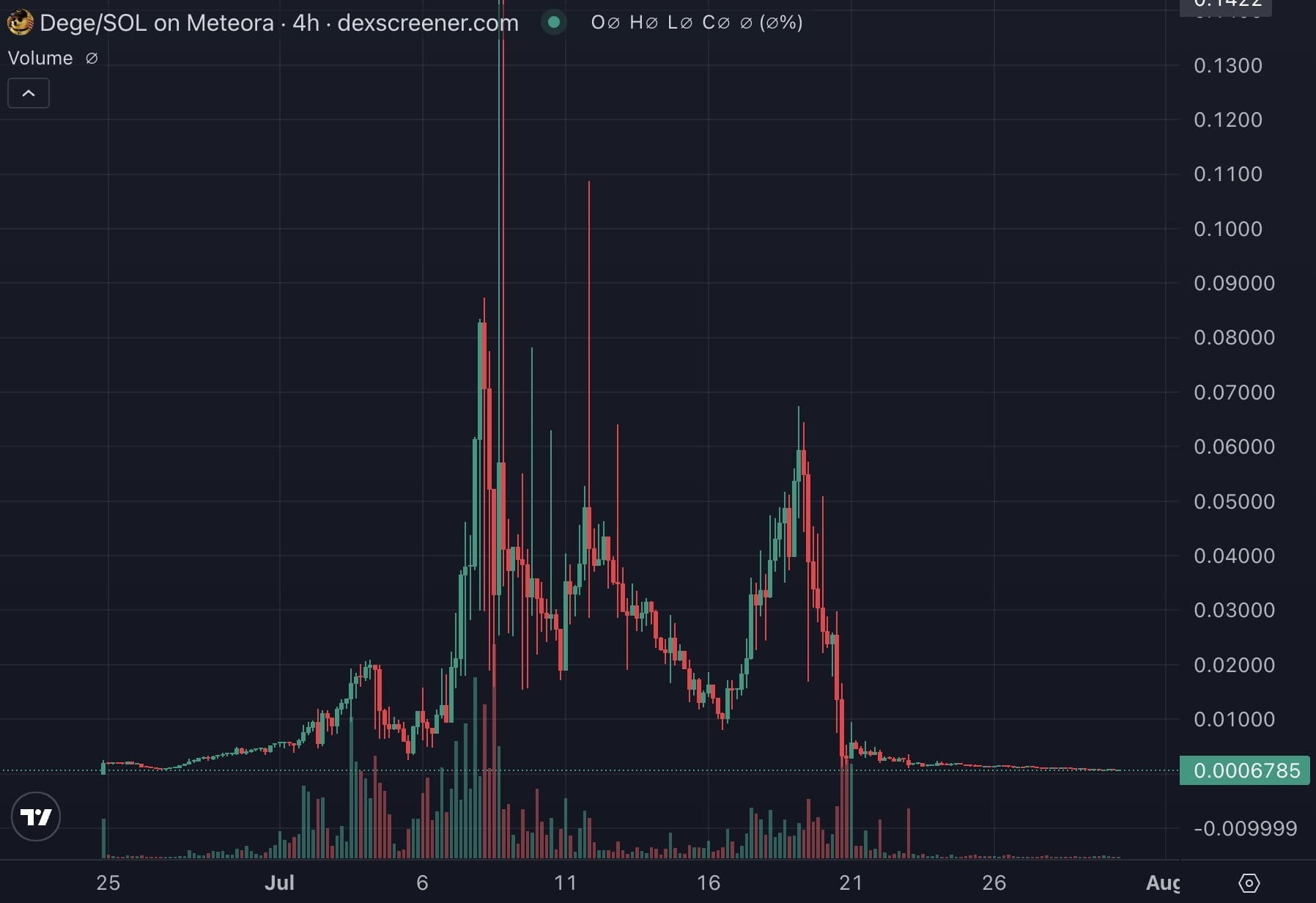
The money is gone.
According to the Bubblemaps team's work published on July 7 even before the insiders' cash out on their X account, the cluster controlled at least 90% of the supply.
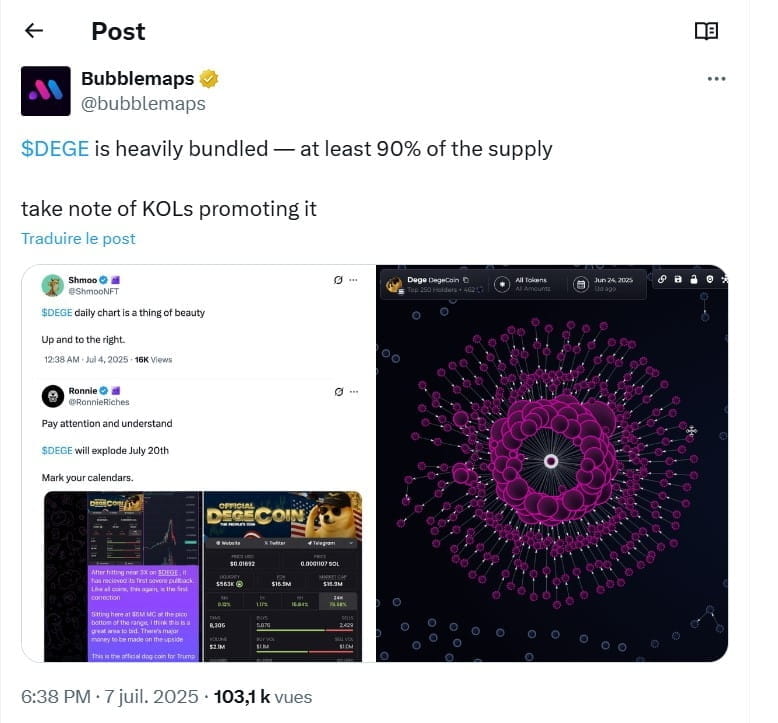
This investigation procedure we just did can be automated with a new Bubblemaps feature: "Magic Nodes". But it was important to understand the procedure to have the reflexes in case some relationships are still hidden after activating the "Magic Node". The "Magic Node" button is at the top of your screen on Bubblemaps.
Conclusion 💭
Clusters tell a story: you see a cluster, you ask questions, you look for answers together. If you find them, that's good, if you don't, maybe you need to dig deeper or ask the team. That's also sovereignty, individual responsibility, how much you can trust the founders of a project when there's so much money at stake. As Nicolas Vaiman, co-founder of @Bubblemaps.io, said, "Crypto investigation is more art than science." Thank you for your attention. Feel free to bubble and share your theories with me.